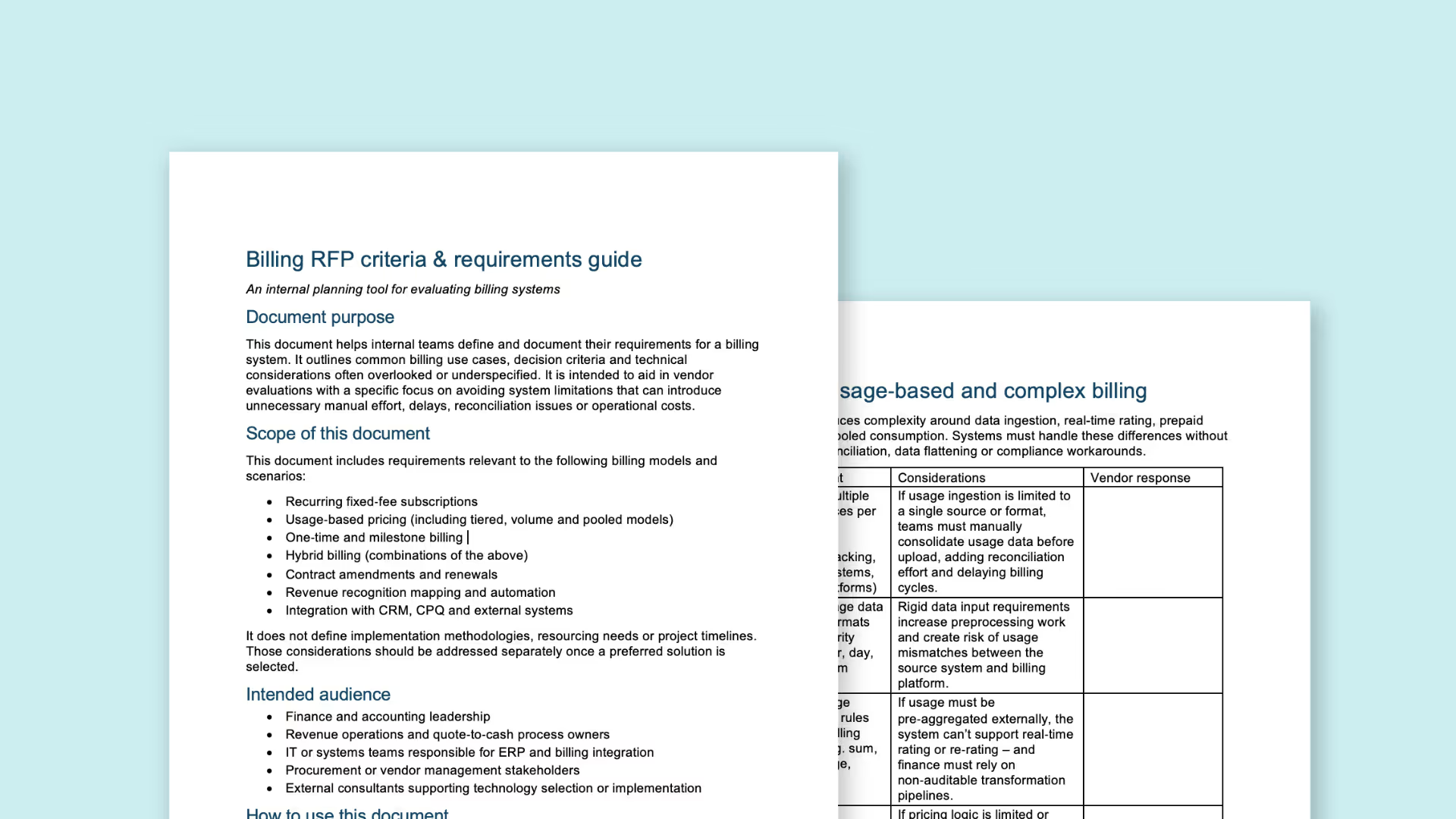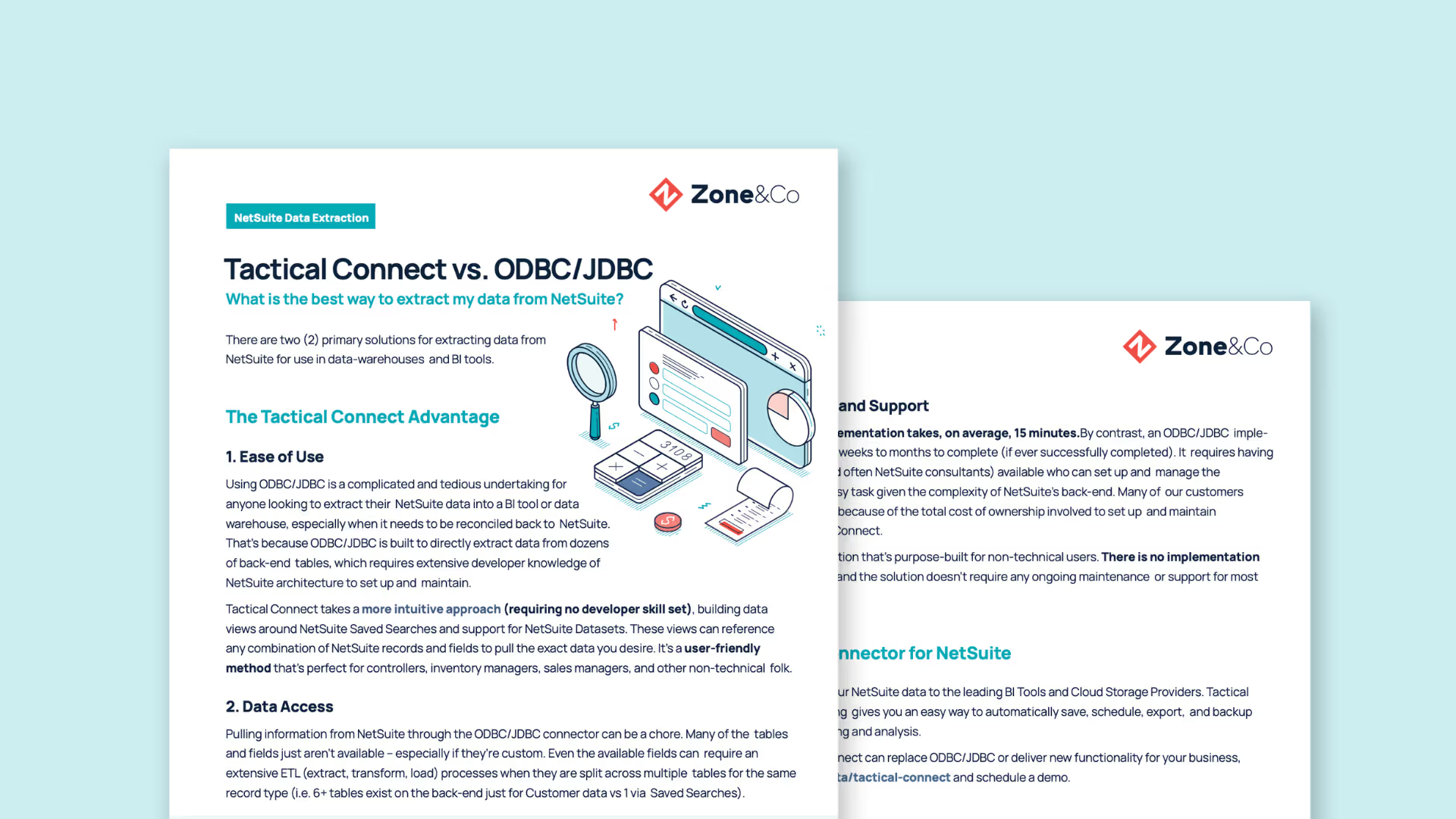Template: Business Requirements Document (BRD) for billing & ERP systems

Most teams rush into billing system evaluations with a few demo questions, a partial list of requirements and an urgent pain point. That’s how billing and subscription management systems get mis-scoped, customized beyond recognition or replaced within 18 months. We’re helping fix that – starting with a purpose-built business requirements document (BRD) you can use to evaluate and compare billing and ERP systems on your way to making a sound decision.
What is a Business Requirements Document (BRD) for billing systems?
A Business Requirements Document (BRD) is more than a checklist. It’s the strategic blueprint that guides how your organization implements or optimizes NetSuite billing. It connects business goals to system functionality, translating how finance operations should run into clear, structured requirements that ERP vendors can actually deliver on.
In the context of billing, subscription management and revenue recognition, a BRD gives finance and operations teams a common language. It helps define what success looks like before any demos, proposals or integrations begin. That clarity keeps projects on track and prevents the costly rework that comes from mismatched expectations later on.
Within NetSuite, a well-defined BRD anchors your system design — from how billing schedules and contract changes are automated to how revenue recognition aligns with ASC 606. For teams evaluating options like SuiteBilling or Salesforce Billing, the same document ensures each system is assessed against consistent, business-driven criteria rather than technical guesswork.
In short, a BRD aligns stakeholders, minimizes risk and creates a scalable foundation for automated finance operations inside NetSuite ERP — where every billing event, revenue stream and subscription change is tracked, recognized and reported accurately.
Successful billing system evaluations start with clarity and structure
When teams define their needs upfront – across workflows, data, edge cases and exceptions – stakeholders align earlier. Vendor conversations stay grounded in realities. Risks and gaps surface long before implementation. Everything that follows runs smoothly.
That’s what a well-structured BRD creates: a shared, complete understanding of what the system needs to do – and the confidence to know when a vendor can actually deliver it.
Build best practices into your system requirements
The most effective teams document success in practical terms – tied to the issues, workflows and constraints that impact business.
What we’ve seen work:
- Frame requirements around actual scenarios, not just feature checklists
- Add edge cases and future needs that might break the system
- Provide considerations that prompt clear, specific answers
- Apply a consistent scoring method across vendors
- Capture it in a format that’s easy to share or drop into an RFP
That’s what a BRD is for. It provides a templated approach you can reuse, refine and rely on – across vendors, across teams.
Download the billing system BRD
Mid-term amendments that trigger cancel-rebook. Usage data that needs massaging through spreadsheets before it can be billed. Revenue tied to invoice timing instead of consumption. These are the issues some billing systems create – even the ones bundled with ERP platforms like NetSuite. They often aren’t built to handle complex contracts, variable usage and revenue recognition compliance in one place.
This BRD for billing and subscription management helps finance teams identify those risks early and look for the right capabilities – before they start meeting with ERP vendors.
What’s inside:
- General system requirements – architectural fit, global support, governance
- Contract and subscription management – mid-term changes, renewals, ramps
- Usage and hybrid billing – ingestion, pooling, caps, top-offs
- Invoicing and AR – cash application, dunning, collections inside NetSuite ERP
- Revenue recognition – ASC 606 compliance, consumption vs invoice timing
- CRM/CPQ integration – handling amendments and audit chains cleanly
- Future-proofing – scaling without reimplementation
Your billing system decision determines how much risk – and how much manual effort – finance carries. This BRD gives you a proven checklist to surface gaps before they become costly.
Download the billing system BRD
Build from a smarter foundation
This billing BRD template is one example of how structured thinking changes the outcome of system evaluations. It helps teams define what success looks like early, compare ERP vendors like NetSuite, SuiteBilling, and Salesforce Billing on equal terms, and uncover risks before they create costly rework.
We’ve spent decades working alongside finance teams through system selections and implementations—seeing where requirements were missed, where assumptions broke down, and how much effort those gaps created later. That experience shaped how we built this BRD for billing and subscription management, so teams can capture what matters upfront and move forward with confidence.
We’ll continue expanding this approach across other finance systems—so every team can evaluate billing, subscription management, and revenue recognition solutions with the same clarity and confidence. Until then, the Billing System BRD gives you the foundation to start smarter and move faster.
Get a Personalized Demo Today
Start a conversation with an expert who asks thoughtful questions and shows you how Zone & Co can solve your unique problem.


